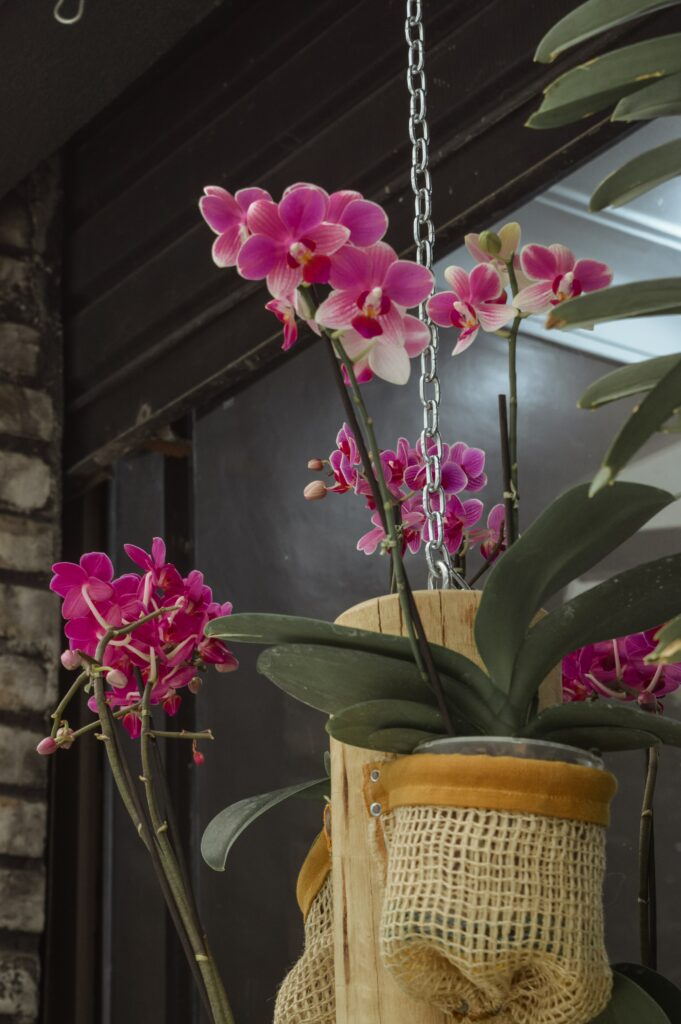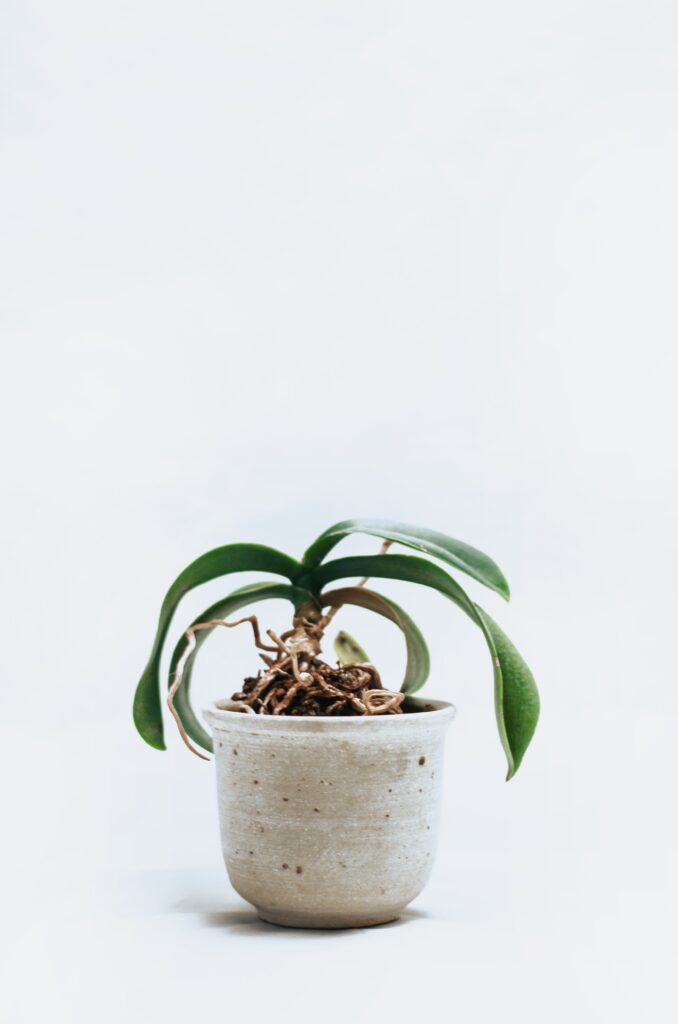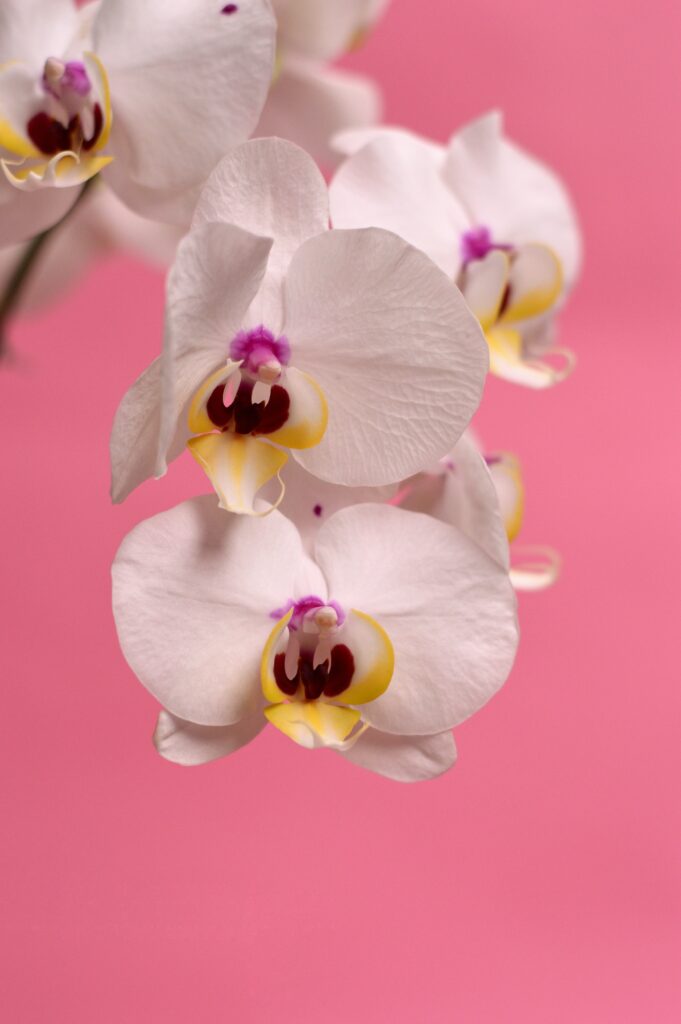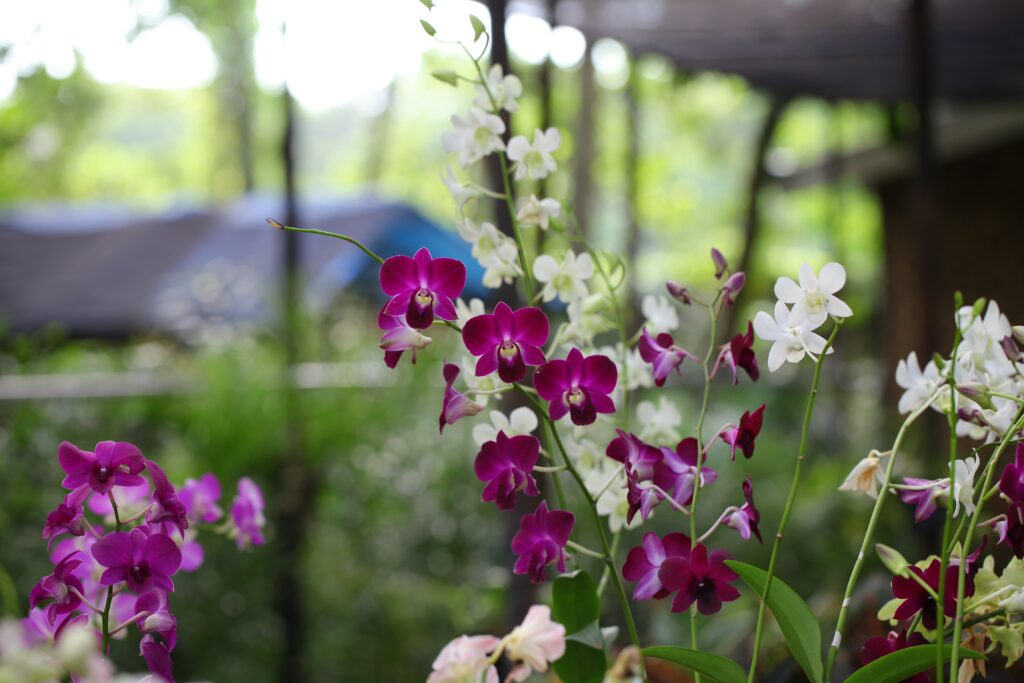
Introduction
Orchids are beautiful, tropical, and surprisingly easy-to-grow houseplants. I absolutely adore the bright-pink blossoms that stick around for so long! Once you learn how to take care of orchids, they’ll be your favorite, low-maintenance houseplant.
The secret to taking good care of your orchids is to understand where they come from, and what type of environment they thrive in. Orchids are found all around the world in tropical and subtropical regions. Most species grow under the forest canopy as epiphytes, meaning they are not rooted in soil, but attach themselves to tree bark, rocks, or even just water.
Mimicking these conditions is the best way to ensure success for your orchids. Of course, there are thousands of different species of orchid, and each one needs slightly different care. Knowing the kind of orchid you have is imperative for making sure it’s properly cared for. Today, we’ll look at how to care for the most popular– and beginner friendly– Phalaenopsis variety of orchids.

How to Repot Orchids
Phalaenopsis orchids need to be repotted in the spring after they have finished blooming. However, unlike most houseplants which need to be repotted every year, orchids have slower growing roots and can often go two years between potting. When you see new roots growing out of the pot, you’ll know it’s time to repot!
Orchids are very sensitive to bacteria or fungal infections, so be sure to clean and sanitize your repotting equipment before using. Select a pot that is 1-2 inches larger in diameter than your plant’s current pot.
When it comes to potting mix do not– I repeat, do NOT– use standard potting mix. Since orchids do not root in soil, planting them in a traditional potting mix will lead to root rot which will kill the whole plant.
Orchids need a well-draining and extremely loose potting mix. Use bark chips or moss mixes only. These potting mixes will ensure your roots get the water they need, without staying too wet.
How often to Water Orchids
Since orchids hate having wet feet, how often should they be watered, and how should they be watered?
One of the most popular orchid growers, “Just Add Ice”, is infamous for their advice to give your orchid one ice cube per week. For the Phalaenopsis orchids, the cold isn’t as shocking to the roots, making this a surprisingly easy way to keep your orchids well-watered. (This method worked for my Mom’s flowers for years!)
For other orchids, place them in shallow water for several minutes once a week and allow them to drain thoroughly before returning to their pot. Water over the top of the plant is OK, but be extremely careful not to over water!

How to Prune Orchids
After orchids have finished blooming, they enter a period of dormancy. During this time, it’s actually beneficial to cut back your plant’s flower stalks in order to promote reblooming. To correctly prune your orchids, the first step is to assess if your plant has a single spike, or double blooming spike.
If you have a green and healthy single spike, locate the node under the lowest blooming flower. Cut approximately one-inch above this node. If you have a healthy double-spike, cut one the same as you would cut a single-spike, and cut the other spike down to the base of the plant. If your plant has spikes that are dead, brown, or deep yellow, cut them all the way down to the base of the plant.
Orchids are sensitive to bacteria and fungal pathogens, so be sure to sterilize whatever you use to prune those stalks. Wash under hot, soapy water, or sterilize with an alcohol lamp and allow to cool before cutting your plant.


How to make Orchids Rebloom
Remember that Orchids do require a period of dormancy before they will be able to bloom again. However, there are some ways we can encourage the flowers to rebloom sooner.
Once an orchid is in its period of dormancy, they become incredibly sensitive to changes in their routines. So once they do go dormant, make sure your orchid is receiving plenty of sunlight, and do not move it to a new location. Continue watering your orchid once a week, and fertilize once a month with a balanced fertilizer (ie 20-20-20 or 10-10-10).
Cooler weather triggers orchids to rebloom. Exposure to temperatures in the 60-65 F range for 2-3 weeks will help your orchid rebloom. When the stalks begin to form, support them with stakes so they do not fall, break, or get damaged as flower buds form.

How long do Orchids Live
An orchids’ life-span depends entirely on the care they receive. The flowers alone on a Phalaenopsis orchid can last 2-3 months. The plant’s lifespan can be several years to a decade and beyond– when they receive proper care.
How often do Orchids Rebloom
Since orchid flowers last anywhere from 7 to 120 days, most orchid varieties only bloom once a year. However, there are some newer hybrid varieties that will bloom twice a year.

Why are my Orchids Flowers Falling Off
Orchid buds and blooms fall off for a few reasons. The first (and most likely) reason is the plant finished flowering, and entering a period of dormancy.
If the plant isn’t shedding its flowers for dormancy, it’s likely receiving too much or too little water or sunlight. If you need to adjust how much water or light your plant is getting, it’s important not to shock your plant by rapidly recorrecting to the other extreme.
For example, if you have been overwatering your plant, don’t let the medium dry out completely before beginning a new watering routine. Instead, incrementally decrease the amount of water, or amount of times you are watering, until you have reached a more balanced schedule.
Likewise, if your plant has been receiving too little light, don’t quickly move it to the sunniest part of your house. Day by day move the orchid into a brighter area, so that when it does reach a sunny spot, it’s ready to take on the heat.

Conclusion
Orchids are truly beautiful and rewarding to keep as house plants. But, like any creature of habit, orchids enjoy routines, and perform best when we to stick to them.
If you set up a low-maintenance routine with your orchids from the start, they will be so easy to care for. AND they’ll reward you with long-lasting, gorgeous blooms. Happy growing!







